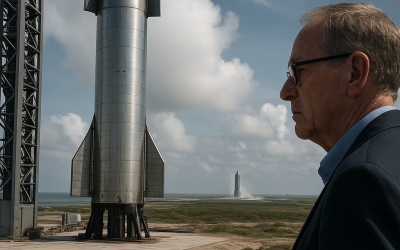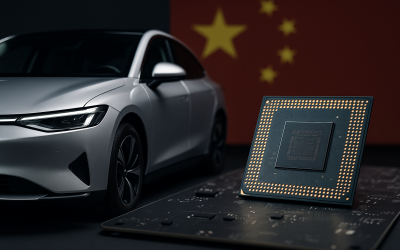Robotaxis have been the poster child for the autonomous vehicle revolution, with Tesla leading the charge in promising a future where cars drive themselves and human drivers are obsolete. In this article, we’ll dissect the collision between the robotaxi hype and the harsh realities of regulation, technology, and economics, as Tesla’s bold claims finally face their first true test in the real world.
The Origin of Robotaxi Hype: Vision Versus Execution
Tesla’s robotaxi vision has always been audacious: fleets of self-driving cars operating as autonomous taxis, fundamentally disrupting urban mobility, labor markets, and the automotive industry. Elon Musk’s repeated promises—dating back to 2016—set expectations for a near-term, fully autonomous future. Investors and media, hungry for the next big disruption, amplified these claims, fueling a speculative frenzy that pushed Tesla’s valuation to stratospheric heights.
But vision is cheap; execution is expensive. The technical leap from advanced driver assistance (Level 2/3 autonomy) to true, unsupervised robotaxis (Level 4/5) is not incremental—it’s exponential. The gap between what’s demoed in controlled environments and what’s needed for safe, scalable deployment on chaotic public roads is vast. Tesla’s “Full Self-Driving” (FSD) software, despite impressive progress, remains fundamentally supervised automation, not true autonomy. This distinction is often lost in marketing but is critical in regulatory and operational terms.
Other players—Waymo, Cruise, Baidu—have faced similar challenges, but their approach has been more measured, with limited, geo-fenced deployments and heavy human oversight. Tesla’s promise of a mass-market, software-updated robotaxi fleet is unique in its scale and ambition. The hype has outpaced the reality, and now, as regulators, insurers, and the public demand results, the rubber is meeting the road—literally and figuratively.
Regulatory Roadblocks: The Real Gatekeepers
Regulation is not a mere speed bump—it’s the primary gatekeeper for robotaxi deployment. Autonomous vehicles must navigate a labyrinth of local, state, and federal rules, each with its own safety, liability, and operational requirements. Unlike traditional automotive regulation, which focuses on hardware standards and crashworthiness, AV regulation demands proof of software reliability, decision-making transparency, and real-world safety validation.
Recent high-profile incidents involving autonomous vehicles—ranging from minor traffic violations to fatal accidents—have made regulators increasingly cautious. In California, the epicenter of AV testing, authorities have suspended permits and demanded more data after safety lapses. Insurance underwriters, facing uncertain risk profiles, are reluctant to back large-scale deployments without robust actuarial data.
Tesla’s approach—deploying FSD in beta to consumer vehicles and gathering data at scale—has drawn scrutiny. Critics argue this is “testing on the public,” while proponents claim it accelerates learning. Either way, regulators are now demanding more transparency, third-party validation, and clear lines of liability. The era of “move fast and break things” is over; robotaxis will need to prove themselves under the harsh light of regulatory oversight before mass adoption is possible.
Technical Reality: The Limits of Current AI and Sensing
Autonomous driving is not just a software problem—it’s a systems engineering nightmare. The real world is messy, unpredictable, and full of edge cases that defy easy categorization. While Tesla’s camera-based approach has made impressive strides, it still struggles with:
- Adverse weather conditions (rain, fog, snow)
- Unusual road layouts and signage
- Complex urban environments with unpredictable human behavior
- Sensor occlusion and data fusion limitations
Other AV players supplement cameras with lidar, radar, and high-definition mapping to compensate for these challenges, but even then, the systems require constant human monitoring and intervention. True Level 4/5 autonomy—where a vehicle can handle all conditions without human fallback—remains elusive.
AI models, no matter how advanced, are only as good as their training data. The “long tail” of rare but critical events—ambulances weaving through traffic, construction zones, erratic pedestrians—cannot be exhaustively captured or predicted. Tesla’s fleet learning approach is a clever hack, but it’s not a panacea. The technical debt is mounting, and the gap between demo videos and reliable, everyday performance is still significant.
Economic Viability: The Business Model Under Scrutiny
Even if the technical and regulatory hurdles are overcome, the economics of robotaxis are far from settled. The promise is seductive: lower costs, higher utilization, and new revenue streams for automakers and mobility providers. But reality paints a more complex picture:
- Capital Costs: AV hardware (sensors, compute) is expensive, and vehicles require frequent maintenance and cleaning.
- Utilization Rates: Robotaxis must achieve high utilization to offset fixed costs, but demand is highly variable by time and geography.
- Insurance and Liability: Uncertain risk profiles mean higher premiums and potential legal exposure.
- Fleet Operations: Managing, deploying, and maintaining large fleets is a logistical challenge that few tech companies have mastered.
- Urban Competition: Ride-hailing giants (Uber, Lyft, Didi) already operate at razor-thin margins; robotaxis must compete on price, reliability, and convenience.
Tesla’s vision of turning every privately owned vehicle into a revenue-generating robotaxi is particularly fraught. Owners face wear-and-tear, depreciation, and uncertain returns, while Tesla assumes little operational risk. The incentives are misaligned, and the business case is unproven at scale. Until these economic fundamentals are resolved, robotaxis remain a speculative bet, not a guaranteed disruptor.
The First Real Test: Tesla’s Robotaxi Rollout
2024 marks a turning point. Tesla’s long-promised robotaxi service is expected to launch pilot programs in select markets, subject to regulatory approval. This is the first time Tesla’s vision will be tested outside of controlled demos and investor presentations. The stakes are high:
- Regulators will scrutinize every incident, demanding transparency and accountability.
- Consumers will judge the service on safety, reliability, and convenience—not hype.
- Investors will look for real-world traction, not just promises and projections.
- Competitors will seize on any missteps to argue for alternative approaches.
The outcome will set the tone for the entire industry. If Tesla can deliver a safe, scalable, and economically viable robotaxi service, it will validate years of hype and position the company as a true mobility leader. If not, the backlash will be swift, and the narrative will shift from inevitability to uncertainty. Either way, the era of unchecked robotaxi optimism is over; reality is now in the driver’s seat.
Conclusion: Hype Meets Hard Limits
Tesla’s robotaxi ambitions are colliding with the immovable forces of regulation, technical complexity, and economic reality. The next 12-24 months will reveal whether the company’s bold promises can survive first contact with the real world. Strategic leaders should focus on fundamentals, not forecasts, and watch for signals that separate sustainable progress from wishful thinking.



0 Comments